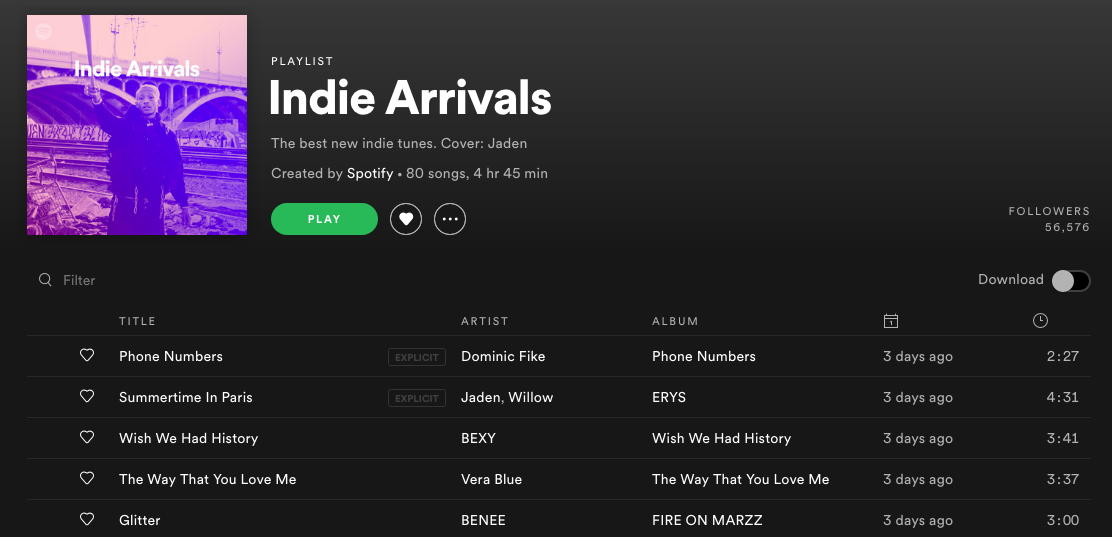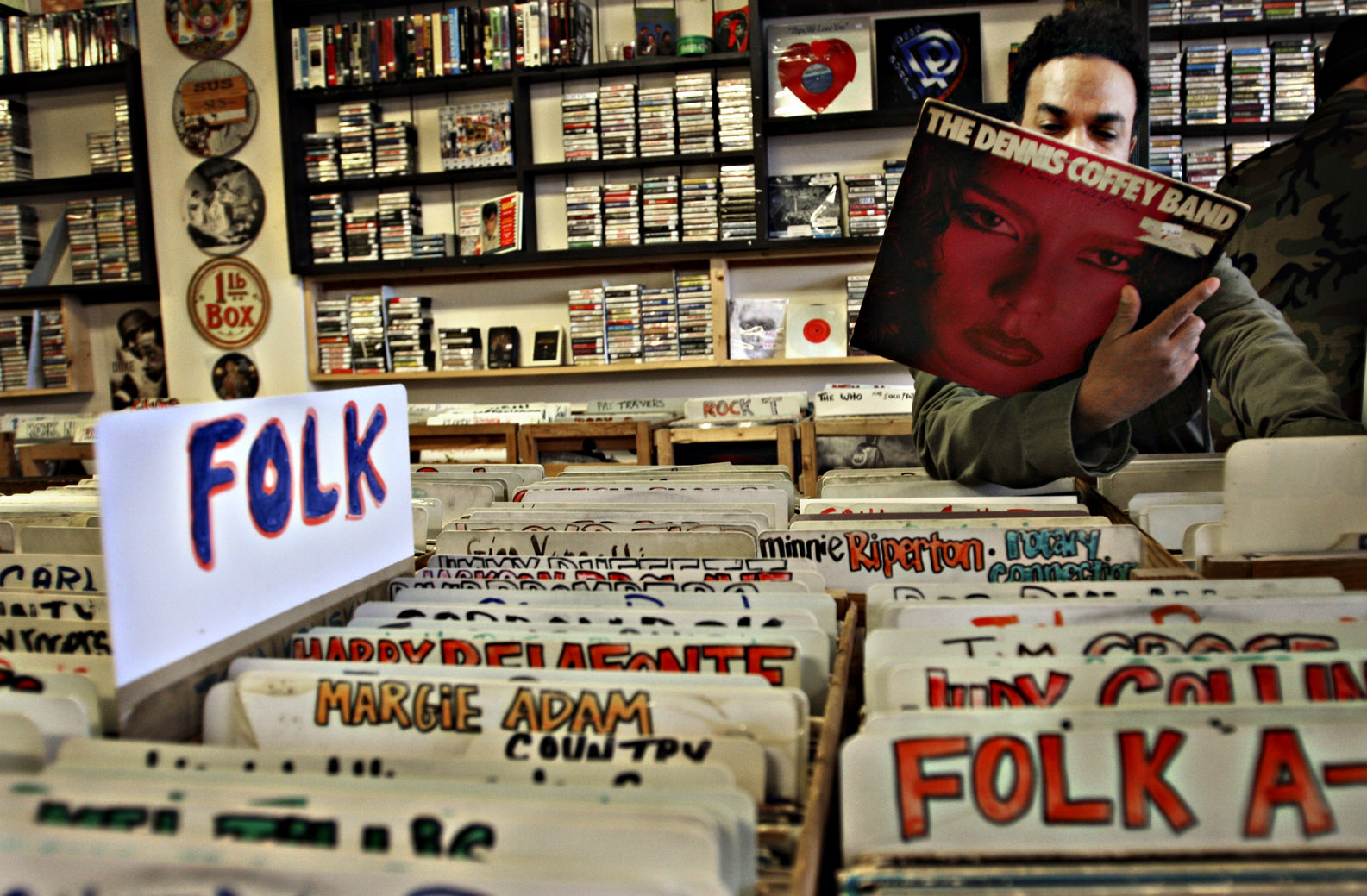Why pitching for popular playlists is not a marketing strategy [op-ed]
![Why pitching for popular playlists is not a marketing strategy [op-ed]](https://images.thebrag.com/cdn-cgi/image/fit=cover,width=1200,height=800,format=auto/https://images-r2-1.thebrag.com/tmn/uploads/Playlist-Pitching-Spotify.png)
Artists don’t ‘break’ anymore, they build.
But most of us industry stooges grew-up in a culture of ‘the big break’ – the idea that musicians would be working away and then suddenly be discovered, launching their careers and profile.
This concept (however dated) still affects the way we approach the modern industry and it’s to our own detriment. We need to focus on a modern way of building a career in music, instead of praying and hoping for that big break.
For the decades since contemporary music came to the forefront, a sudden radio playlisting could be a career starter. Megabucks could be earned, tours could be launched, and careers established, based on the decisions of one or two music directors.
Musicians and labels would often spend big money on the right radio plugger to get their song on the desks of these decision-makers. A gamble that, if it paid off, would repeatedly pay for itself.
When I first started working with dance music labels, the big prize was a banner on Beatport.
Knowing that DJs would go to Beatport, the banner came with prestige and the opportunity to be a new addition to the crate and then hopefully hundreds or thousands of dancefloors.
The customers (Mostly DJs) paid their $2USD each for the track and if your release charted, there was some significant income potential. Not only that, if your song broke through, you could also expect to see a positive follow on for all future releases. Of course, those DJs were paying upfront for the music, which is different from the streaming model.
Now firmly in the streaming era, we’ve carried a lot of these attitudes over when they need not apply. Listeners aren’t paying upfront to buy an album, they are paying overtime. Media is massively decentralised and people are far more likely to find their next favourite song on an app.

Yet, the editorial playlist is a prime example of the perceived big break.
When the artist and label are so focused on the idea of getting on New Music Friday or New Music Daily or one of plethora store curated playlists on Apple Music or Spotify, they can miss out on the opportunity to create something less reliant on luck.
The algorithms support consistency. Whether it’s Youtube or Spotify, you appear on your fans feed, more regularly if you make more content. You appear in the feed of people who like similar content to your fans, more regularly, if you make more content.
But here’s the key difference, Youtube doesn’t have editorial playlists for their content.
The people that run their own Youtube channels put more energy into growing their fanbase organically, rather than looking for that big playlisting break. They don’t put all their eggs in one basket for that ‘hit video’ they think they have on their hands. They can still go viral at any time, but it’s not their sole marketing plan.
Much like radio play, artists often think they’ll get good playlist support based on merit – and in a fair universe, they would. But of course, there’s lots of great music and limited numbers of decent playlisting slots. But, the downside to playlist support is the comedown after the sugar rush.
Once you’ve been removed from an editorial playlist and your monthly listeners start to plummet, you may be crushed by the appearance of your dwindling numbers.
So, what would you do if this kind of support was not possible? What if we eliminated the idea of the big break? I think those are the best questions a budding musician, label or manager can ask. Because the next question then has to be “what would our marketing strategy look like?”.
Perhaps it would be a series of incremental steps, with regular releases, regular well-targeted marketing, focused social content and a sustainable budget that can be applied every month. With a focus on audience growth at its centre, because frankly, that’s who will pay for your future.

After you apply this systematic approach, certain questions start to answer themselves. It also forces artists to be realistic about the size of their audience. Perhaps that big $5,000 music video makes less sense if you’re servicing an audience of 1,000. Perhaps the dream of producing vinyl makes more sense after reaching a specific audience goal when you know you have the fan base.
Once your marketing strategy is in effect, then the pitch to playlists is something you do every release without hesitation, and without the weight of expectation.
All it takes is the appropriate lead time, a decent write-up (bio/blurb, perhaps with some marketing points) and good communication with your distributor. In fact, some of the stores enable you to pitch to editorial playlisting via their artist logins, which is even more simple.
The big break may still come at any stage of the artist’s career, but those involved will feel so much more certain about their decisions if sustainable measurable growth is as the centre of any marketing strategy.
A key realisation with releasing music, as with performing and recording music, is that you get better through repetition.
Being prolific is a way to get good fast. Knowing what you can do and do repeatedly, to move towards a sustainable career, is a way of acknowledging that your destiny is in your own hands and this so-called big break, is a luxury, not a necessity.
Arlo Enemark has spent 10 years as a music industry professional, working on content strategy, A&R and digital distribution for labels and artists with Xelon Entertainment as well as being label manager for dominant Aussie club label Medium Rare Recordings. Arlo now heads up noisehive.com –Xelon’s distribution platform for independent artists.






























